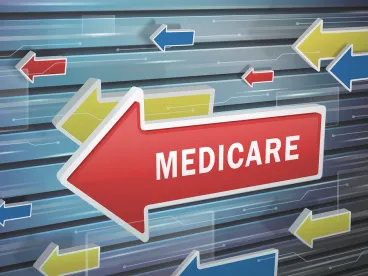On September 13, 2020, the White House issued an Executive Order titled “Lowering Drug Prices by Putting America First” (the Executive Order), which directed the Secretary of the US Department of Health and Human Services (the Secretary) to implement payment models pursuant to which Medicare would pay no more than the “most-favored-nation price” for certain Part B and Part D drugs and biologics. If implemented, such payment models could transform the drug and biological reimbursement landscape. However, because the models will require implementation through the formal rulemaking process, their path to actual implementation is highly uncertain, and the Executive Order will not result in short-term changes.
IN DEPTH
The Executive Order
The White House announced on July 24, 2020, that it would issue an executive order to ensure the United States pays the lowest price available in economically comparable countries for Medicare Part B drugs. However, President Trump indicated he would delay issuing the Executive Order, pending discussions with pharmaceutical executives on the subject.
After those discussions proved unfruitful, President Trump issued the Executive Order on September 13, 2020, directing the Secretary to take appropriate steps to implement payment-model demonstrations pursuant to which Medicare would pay no more than the “most-favored-nation price” for certain prescriptions and biological products under both Medicare Part B and Medicare Part D. The most-favored-nation price means the lowest price, adjusted for volume and differences in national gross domestic product (GDP), for a pharmaceutical product that the drug manufacturer sells in a member country of the Organisation for Economic Co-operation and Development that has a comparable per capita GDP. Notably, the Executive Order alone does not establish the payment models; rather, it directs the Secretary to “take appropriate steps,” “to the extent consistent with law,” to develop and implement rulemaking to test the models.
More specifically, the Executive Order directs the Secretary to “immediately take appropriate steps to implement his rulemaking plan” for the Part B payment model, likely referencing the International Pricing Index (IPI) Model that was proposed in a 2018 Advance Notice of Proposed Rulemaking and for which a Proposed Rule has been under review at the Office of Management and Budget since June 2019. (For more information on the IPI Model, please refer to our summary materials at https://www.mwe.com/insights/cms-requests-comment-on-pricing-index-part-b-drugs/ and https://www.mcdermottplus.com/wp-content/uploads/2018/11/IPI-Webinar-Slides.pdf). Although the Trump administration has not previously included Medicare Part D in its international reference pricing proposals, the Executive Order also directs the Secretary to “take appropriate steps to develop and implement a rulemaking plan” for a payment model for Part D prescription drugs and biological products, which constitute a larger share of drug spending compared to Medicare Part B.
Analysis
The Executive Order is the culmination of years-long discussions and posturing as the Trump administration has sought to take meaningful steps to reduce the prices of prescription drugs in the United States. Although Congress has introduced legislation to address drug pricing, the bills have not gained necessary bipartisan support to move forward. In the absence of drug price legislation, the Trump Administration was left with a limited number of relatively narrow opportunities to meaningfully address drug pricing.
The Medicare payment model demonstration authority was one such vehicle. If implemented as previously described by the Centers for Medicare and Medicaid Services (CMS) and particularly if expanded to Part D drugs, the IPI Model would make sweeping changes to the drug and biological supply chain and pose a variety of expected and unknown implications for drug and biological manufacturers, distributors, group purchasing organizations, hospitals, physician clinics and pharmacies, among other industry stakeholders.
Significant uncertainties remain as to whether this attempt at restructuring the drug pricing landscape has any chance of proceeding given the rulemaking timeline and whether President Trump will be elected for a second term. However, it is noteworthy that the Administration and House Democrats have proposed similar IPI drug pricing models. Stakeholders should expect to continue to see legislative and regulatory proposals in 2021 that consider some form of international reference price no matter who is elected President.
If CMS decides to move forward with rulemaking for either the Part B or Part D drug payment models, the rulemaking process would offer the public another opportunity to comment on the various complexities of the payment model demonstration. Public responses, as well as various political and regulatory considerations, have the potential to influence whether or how CMS will decide to proceed in implementing the Executive Order.







 />i
/>i